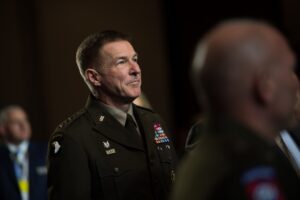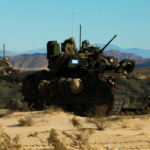
The Army’s chief of staff said Thursday with “two or three more years of good, solid budgets,” along with keeping end strength flat and reducing the number of “exotic-type” exercises, the service believes it will be able to deliver results from across its modernization agenda. “We don’t have the budget yet. But a lot of people are saying you shouldn’t anticipate having a much larger budget than you have, so what we’re doing is prioritizing what needs to get done,”…

 By
By 











